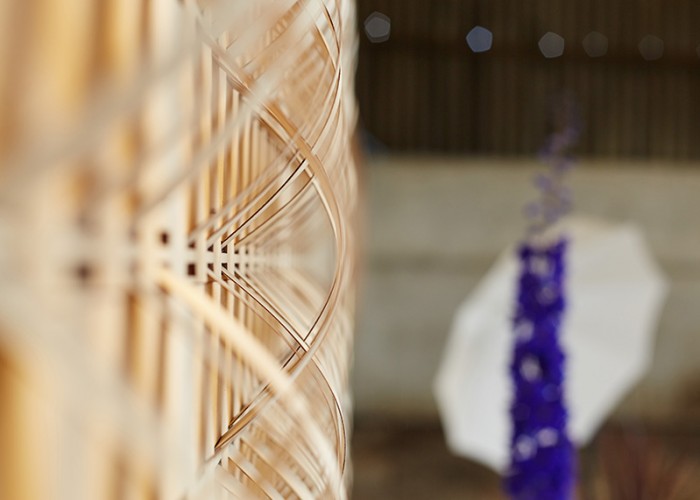Q&A with Emily Skinner, Evan James
Last week, DESIGN INSIDER visited Surface Design Show on our walk around the show we discovered the passionate Emily Skinner, She introduced us to her start up company Evan James and the wonderful new product she is developing, we thought it looked great and wanted to find out more…
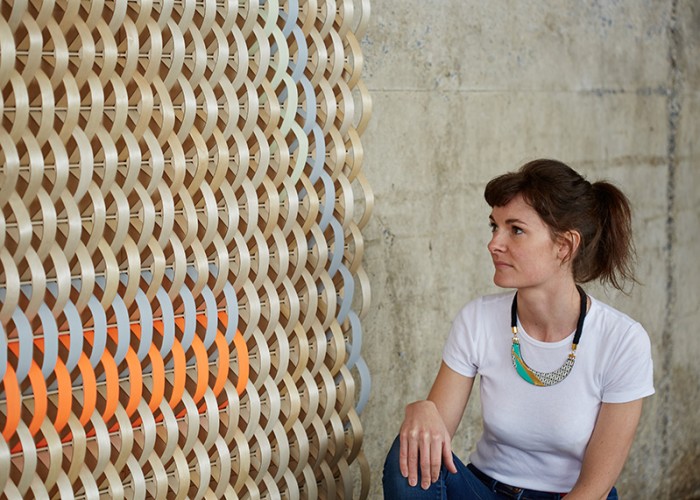
First off, can you introduce yourself and let us know how you came up with the design?
I’m Emily Skinner, the founder of interactive sensory design company Evan James Design. The design concept for the interactive wall coverings originated at a specific time, exactly a year ago when I was exposed to a series of concepts and systems within the space of 2 weeks; from a peg board retail display concept from Ongl design + make, to a woven wood tile, to the desire to create a 3D wall paper. It all fell into place in that sudden eureka moment.
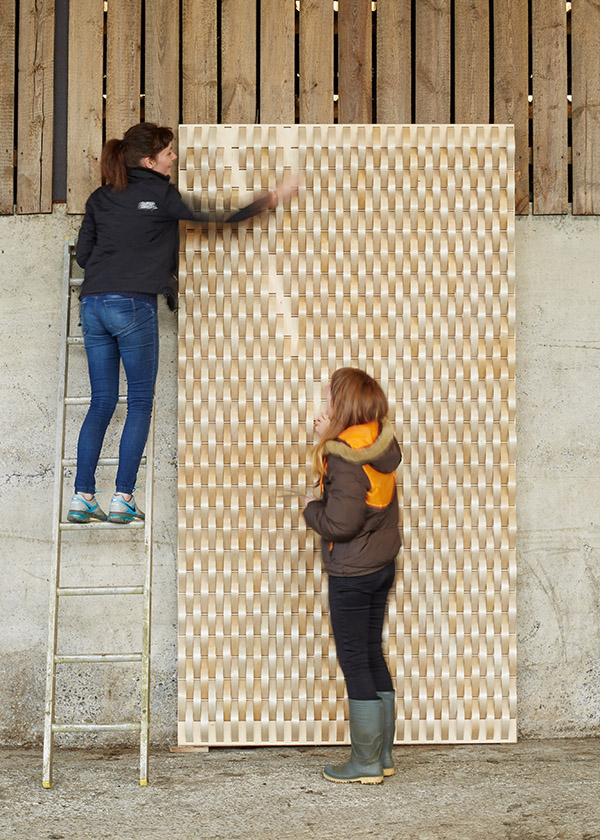
We saw you at Surface Design Show, how did you find the show? and how is it as a start-up company breaking into this market?
The Surface Design Show had been on my radar for a few months as a great showcase for Evan James Design products. It was on the insistence of Marianne Shillingford, Creative Director of Dulux, that I booked an Inspiration Centre stand at SDS’16. The target audience for our products are architects and interior designers within the private, hospitality and retail design sectors. Having attended previous trade shows, I never anticipated over 80% of the visitors I would talk to at the show to be our target market and for every conversation during the show to potentially turn into a commission. The response was unprecedented. From such a positive show case, it is now when the hard work as a start-up company really begins.
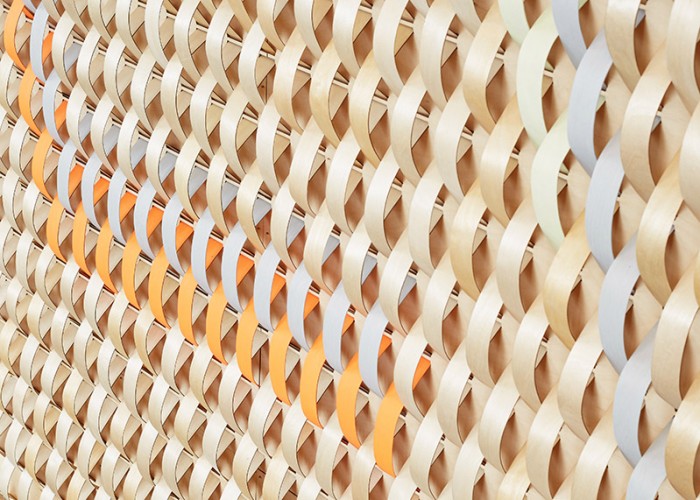
How has technology helped? And what have you used?
Advances in laser cutting technology have become accessible to all, in an easier and quicker to use capacity. However it is a more technologically responsive approach that I’ve been searching for since establishing the company. Initially I thought it was out of my grasp without employing an electrical technician. Then I discovered Sam Labs at TENT London 2015. With the collaborative help of Adam Davies Design an interactive lighting prototype range titled Luminen was launched at Surface Design Show ’16. Using Sam’s responsive modules and their app, LEDs were embedded in the wall which responded to the proximity of people in a hand held console.
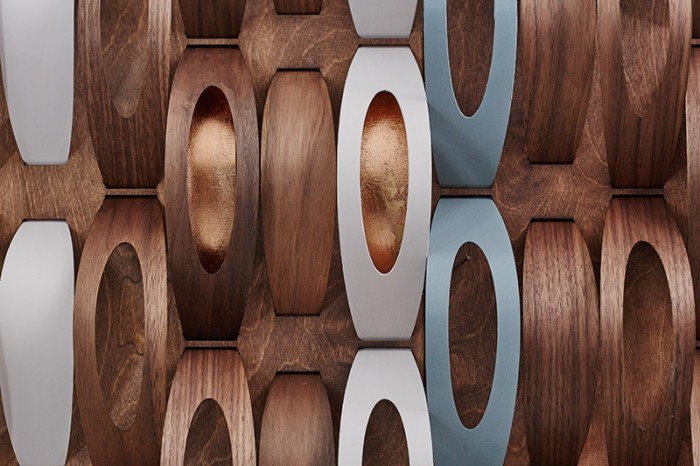
Where do you see this product going? And are we going to see it in any projects soon?
The aim is to launch the interactive lighting range, Luminen, ready for market by the end of the year. Instead of Sam’s individual modules, LED strips will be used, where every LED can be individually programmed to respond to environmental circumstances. Again it will be wirelessly controlled, but rather than a hand held sensor console dictating the response rate, these sensors will also be embedded within the wall structure. I’m sure it will be in projects very soon if the reception at SDS’16 was anything to go by.
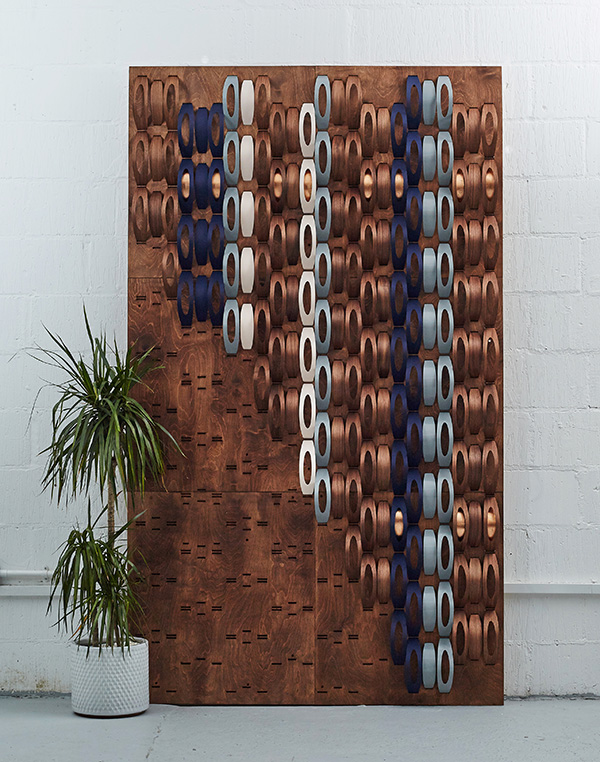
How does sensory design come into play? And why is this important to you?
I wanted to create products which were more than merely aesthetically stimulating, to engage on another level which accommodated personal customisation. Therefore sensory design became fundamental, promoting form and function. The wall coverings are all modular surface systems which can be changed and manipulated after installation, embedding interactive lighting is the perfect development.
